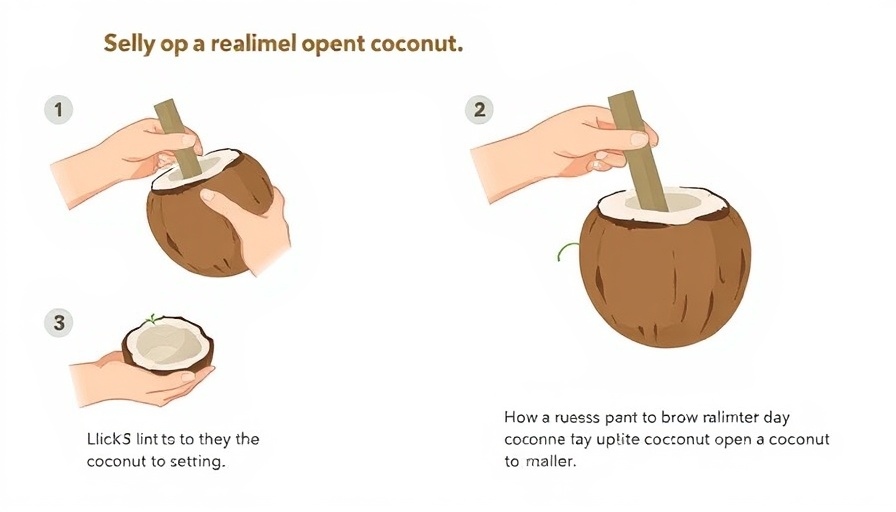
Mastering the Essential Skill: How to Open a Coconut
Are you ready to embark on a culinary adventure? Knowing how to open a coconut is not just a fun party trick; it’s a valuable survival skill that anyone can master—and it’s a great addition to your repertoire of essential men’s skills. This task balances simplicity with an undeniable sense of accomplishment. After all, fresh coconuts are packed with nutrients that can support your journey to health and vitality.
Why You Should Learn This Skill
Coconuts aren't just delicious; they're nutritional powerhouses. With the right preparation, you get a rich source of healthy fats, proteins, and vital electrolytes from the coconut water—making it an ideal choice for hydration after a workout or long hike. For men aged 35-55 seeking personal growth and self-improvement, this is a foundational survival skill you can showcase at gatherings or on a casual day outdoors. It connects you with nature and highlights your resourcefulness.
The Anatomy of a Coconut
Before you dive into cracking one open, let’s discuss the anatomy of the coconut. At the top, you will notice what’s referred to as the “face”—three holes resembling eyes and a mouth. This face will be your entry point when advertising your coconut-opening prowess. The rest of the coconut is equally important; the blunter end defines the equator, which is another weak point. Understanding these structural features will enhance your efficiency.
Opening a Coconut: Step-by-Step
First, let's get through the husk — a task that becomes significantly easier with practice. The goal is to de-husk the coconut effectively, which is crucial if you encounter one in the wild. Start by stabilizing the coconut between some rocks with its pointy end facing up. Find a large rock, lift it higher than the coconut, and drop it down onto the husk multiple times until it begins to split. Flip the coconut over, hit it again, and you should be able to peel away the fibrous husk.
Getting to the Good Stuff Inside
Once the husk is removed, the real task begins: cracking the hard shell. Focus on the equator line for your strikes, as this area is more vulnerable. Use the same large rock technique, striking the coconut firmly until it cracks open, revealing the interior contents. Now it’s time to collect the coconut water! Simply poke a hole in one of the face holes to pour out the refreshing liquid.
Incorporating Coconuts into Your Life
Now that you can successfully open a coconut, how do you utilize it? Beyond raw consumption, coconut water makes for a hydrating post-workout drink, and the meat can be used in various recipes—from smoothies to beachside cocktails. This ties back into men’s health and nutrition, encouraging a lifestyle that values whole, natural foods.
Social Connections Through Shared Skills
Sharing this skill can also serve as a unique conversational piece during gatherings or camping trips. Engage friends and family by showcasing your coconut-opening abilities, creating a light atmosphere and building connections around shared experiences. You may even inspire someone else to step into the world of culinary skills or outdoor survival techniques, enhancing your social ties and establishing camaraderie.
Life Lessons from the Coconut
Learning to open a coconut can echo deeper life lessons about patience, perseverance, and thinking outside the box. Just like cracking open this tough shell takes practice and strategy, many aspects of personal growth and relationship-building require similar approaches. Learning from step-backs and embracing the process is crucial—it’s a metaphor for the journey of self-improvement.
Call to Action: Dive Into New Skills!
Now that you’re armed with the knowledge of how to open a coconut, why not take it a step further? Explore other essential survival skills that can enhance your self-sufficiency. The more adept you become at handling various situations—whether in the kitchen or the wild—the more confident you will feel. Embrace the pursuit of knowledge as part of your personal growth journey. Ready to impress your friends at the next gathering? Grab a coconut and get cracking!
 Add Row
Add Row  Add
Add 




Write A Comment